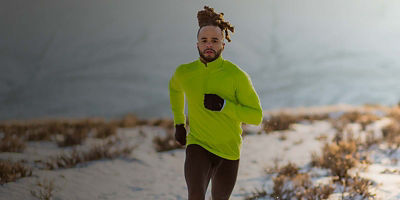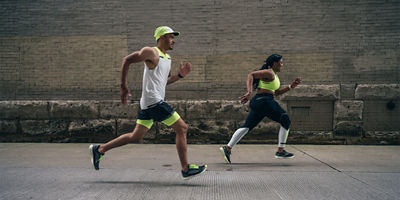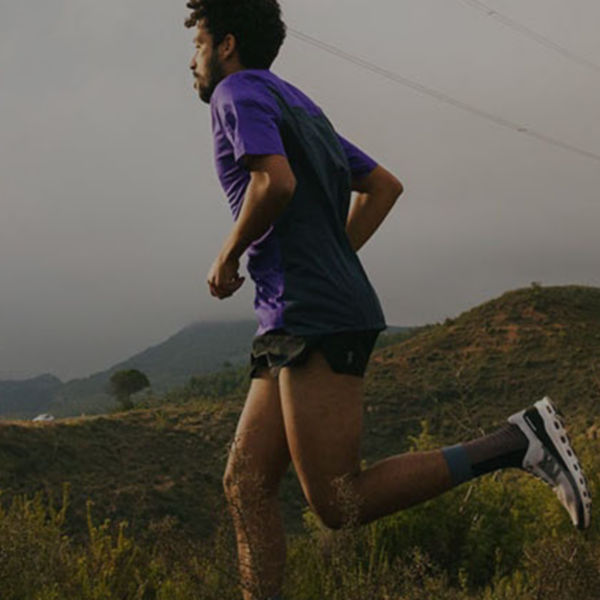
With running’s outdoor ground pounding and heavy breathing, and yoga’s meditative, inward-focused nature, the two are like the yin and yang of movement. Balancing out your running week with a few key yoga poses can keep your body healthy and operating well—and help your mind stay calm and present. Plus, the strength, balance, and breath control gained from yoga can actually improve your running.
Since the jury is out on whether stretching is beneficial for runners or not, approach yoga with body awareness and a sense of individuality. Move into postures if it feels good to you—good as in, “this hurts but I need it,” and not in a way that has you feeling, “that shouldn’t be tugged”—and if your running doesn’t suffer from it. If not, don’t proceed. Otherwise, here are a few low-impact yoga moves that can work well for runners due to the muscles targeted, and focus required.
1. Mountain Pose
This seemingly simple pose, where you stand tall with feet together and hands in prayer position at your chest, serves as a foundation for building good posture. The pose calls for upright alignment of the spine and your shoulders back, instead of rounded forward. With your bare feet connected to the mat/ground, Mountain Pose also builds strength in your feet and legs as you work to stand still. Improved posture gained from mountain pose can help improve the flow of your breath—something that’s always good for runners.
2. Tree Pose
This pose, where you stand with one foot flat on the mat and place the other foot flat against either the inside of your opposite shin or above your opposite knee (never directly on your knee), works balance, strength, and flexibility. You’re increasing strength in your balancing leg, and increasing flexibility in your bent leg as you open your hip crease to face it forward with your bent knee pointing out to the side. Hip flexors do a lot of work while running, and this pose can help release built-up tension.
3. Chair Pose
We use the front of our legs incessantly while running, our quadriceps and hip flexors working with every stride. Tapping into our gluteus muscles by settling into the Chair Pose can both activate those muscles and strengthen them. In Chair Pose, bend at the knees and sit back into your glutes as if sitting in an imaginary chair. Keeping your arms straight, above your head and next to your ears, while keeping shoulder blades down your back instead of hunched up, can also help improve upper body alignment and overall posture.























